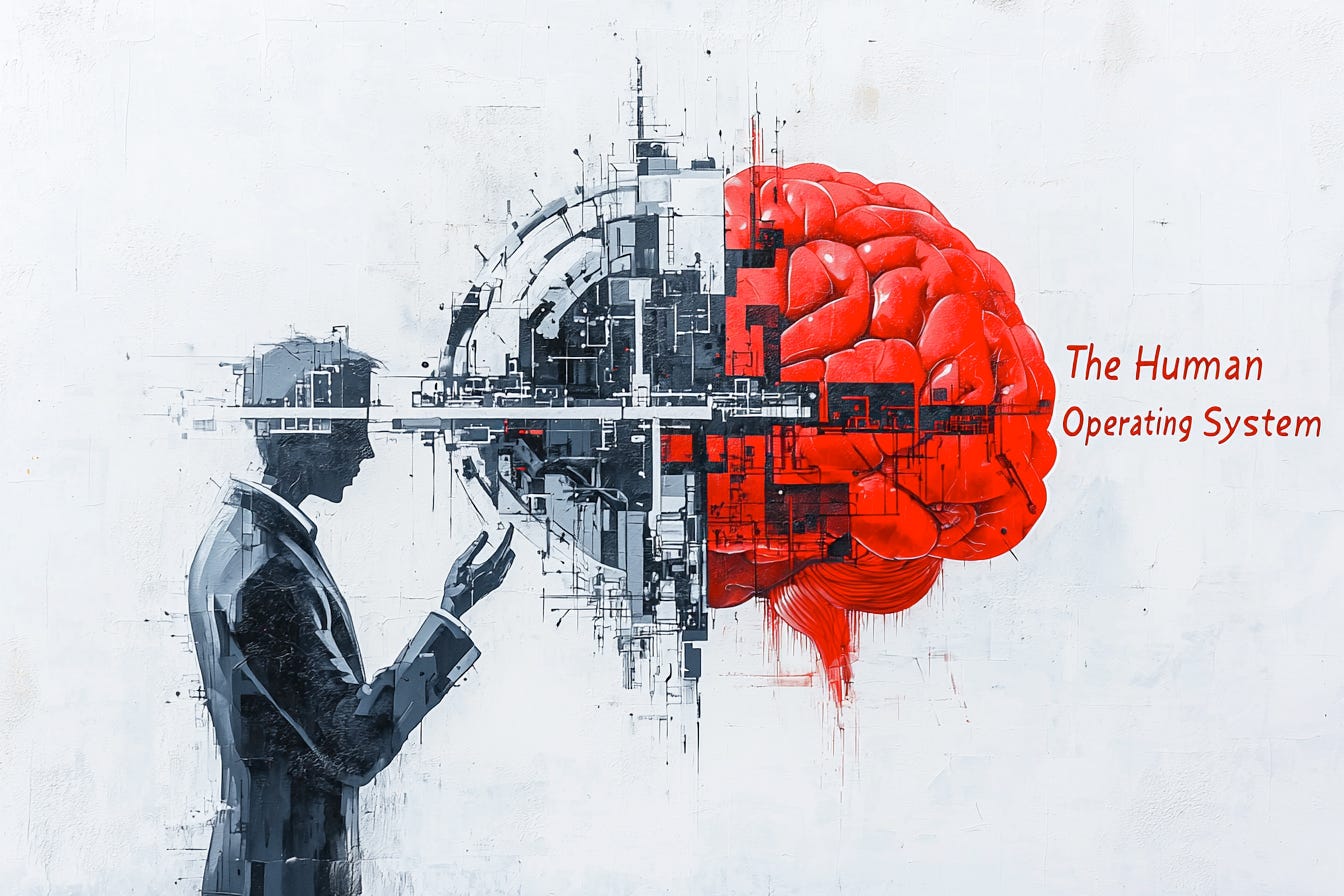How Leadership and Culture Enable Transformative Data Platforms
You've built the perfect data platform: elegant architecture, cutting-edge tools, clear governance. So why isn't it delivering? The answer lies in the human operating system—the mindsets, behaviors, and practices that shape how people actually work. Ignore this, and your platform becomes just another monument to unrealized potential. As one CTO lamented, "We nailed the tech, but our organizational reflexes killed us."
Throughout this series, we've meticulously constructed the technical blueprint for scalable data platforms: from the essential abstractions (Blog 2) to the autonomy of domain teams (Blog 3), the organization of effective data domains (Blog 4), and the balance of innovation and reliability (Blog 5), culminating in architectural governance (Blog 6). But architecture alone is inert. It's the human operating system that breathes life into these designs, or conversely, strangles their potential.
This seventh and final installment explores how to design a human operating system that unleashes, rather than strangles, your data transformation.
The Strategic Framework: Four Levers of Control
At the heart of effective data organizations lies a leadership framework that balances empowerment with alignment. Simons' Four Levers of Control provides the strategic foundation that makes this balance possible. Far from being just another management theory, this framework serves as the organizational operating system that enables both freedom and alignment while ensuring focus on value creation.
Belief Systems establish the shared values and purpose that guide decision-making across the organization. When everyone understands and embraces these core beliefs—including the fundamental commitment to data-driven value creation—decentralized decision-making becomes not just possible, but effective. A healthcare analytics provider transformed their platform adoption by shifting from technical mandates to a clear belief system around patient outcomes. By establishing "improved care through insights" as their north star, they created alignment that technical standards alone never achieved.
Pitfall: Many organizations create belief systems filled with vague aspirational statements that don't translate into daily actions, creating cynicism rather than alignment.
Boundary Systems create the enabling constraints within which teams can operate freely—much like traffic laws that enable rather than restrict movement. Well-designed boundaries in data organizations define what teams must not do (violate privacy regulations, create ungoverned data stores) while leaving maximum freedom in how they create value. A financial services firm demonstrated this by replacing their 200-page governance manual with clear, simple boundaries: "No customer data leaves secure environments; all analytical outputs must be explainable; all data models require lineage." Within these boundaries, teams enjoyed unprecedented freedom.
Pitfall: Organizations often implement overly restrictive boundaries that focus on how work should be done rather than what must be avoided, unintentionally creating permission-seeking behavior.
Diagnostic Controls establish the key performance indicators that guide success. These metrics serve as a compass, helping teams navigate toward outcomes while maintaining alignment with strategic goals. When well-designed, these KPIs enable teams to make informed decisions without constant oversight. A retail organization shifted their diagnostic controls from technical metrics (number of pipelines, processing volume) to outcome-based measures (time to insight, decision quality improvement), transforming how teams approached their work.
Pitfall: Many organizations create too many diagnostics, measuring what's easy rather than what matters, creating a reporting burden that distracts from actual value creation.
Interactive Controls create the dynamic feedback loops necessary for organizational learning and evolution. This is where strategy meets reality—through structured dialogue, reflection, and adaptation. These controls aren't about checking boxes; they're about creating meaningful conversations that drive improvement. A manufacturing company transformed their quarterly reviews from status updates to interactive exploration sessions, where teams and leaders collectively examined assumptions and identified emerging opportunities.
Pitfall: Interactive controls often devolve into status updates or performance evaluations, missing the opportunity for genuine strategic dialogue and learning.
When properly implemented, these four levers create an environment where teams can move with speed and autonomy while remaining aligned with organizational objectives—the perfect complement to the technical architecture we've explored throughout this series.
The Management Approach: Tight-Loose-Tight
While the Four Levers of Control create the strategic foundation, the Tight-Loose-Tight (TLT) framework (by Rune Ulvnes, CoWork AS) provides the operational rhythm that brings these elements to life in day-to-day work. This approach creates a natural cadence that balances direction with autonomy, particularly powerful when applied to data domains and products.
The first "Tight" phase establishes clear direction by translating strategic boundaries and beliefs into specific objectives. Here, leaders and teams work together to define what success looks like in terms of outcomes rather than outputs. This phase ensures everyone understands both the "what" and the "why" before moving to implementation. A telecommunications company transformed their data product development by reimagining this phase. Rather than detailed technical specifications, they focused on defining clear outcome metrics: "This customer churn model must enable retention specialists to identify at-risk customers 30 days earlier than current methods, with enough context to create personalized retention offers."
During the "Loose" phase, teams exercise their autonomy while using established metrics as guideposts. This is where the technical independence enabled by your data platform architecture meets the organizational freedom to execute without interference. The diagnostic controls provide teams with the feedback they need to self-regulate and make informed decisions, all while staying aligned with organizational objectives. An e-commerce platform exemplified this by empowering domain teams to select their own approaches for solving customer behavior prediction challenges, measured against clearly defined outcome metrics rather than prescribed technical approaches.
The final "Tight" phase—often called "Stop! Think!"—is where the magic of organizational learning happens. This phase transforms traditional review processes from status updates into genuine learning opportunities. Rather than focusing solely on "Did we deliver?" these sessions explore deeper questions that drive learning and adaptation:
"What assumptions did we make that turned out to be valid or invalid?"
"What unexpected consequences—positive or negative—did we observe?"
"What patterns are emerging that might inform our approach?"
"How might our understanding of the problem space have evolved?"
"What capabilities do we need to develop to be more effective?"
A healthcare analytics provider institutionalized bi-weekly "Stop! Think!" sessions where teams temporarily halted development to evaluate whether their current approach was still the optimal path to their desired outcomes. These sessions weren't just retrospectives; they were forward-looking explorations that often revealed opportunities and risks invisible in daily work.
This "Stop! Think!" moment creates legitimate space for questioning assumptions and examining unintended consequences—exactly the kind of reflection that prevents organizations from falling into the comfort trap we discussed in our first installment. It deliberately activates the type of critical thinking that helps organizations avoid functional stupidity, where capable individuals restrict their cognitive capabilities to focus on execution without questioning underlying assumptions.
Integrating the Frameworks: How Measurement Drives Behavior
The true power of these frameworks emerges when they work together, particularly in how they shape measurement systems. The interaction between TLT's rhythms and the Four Levers' controls creates a dynamic measurement approach that drives both alignment and learning.
Effective data organizations implement measurement systems that serve multiple purposes simultaneously:
Direction Setting: Measurements establish clear expectations about outcomes, not just outputs. A pharmaceutical company shifted from tracking the number of machine learning models deployed to measuring how those models changed research decisions, focusing teams on enabling valuable changes in scientific workflows.
Learning Acceleration: Measurements become tools for discovery rather than just evaluation. A retailer transformed their weekly metrics reviews from accountability sessions to learning forums, using performance data to identify patterns and generate insights about customer behavior.
Capability Building: Measurements highlight growth opportunities, not just performance gaps. A financial services firm implemented capability maturity metrics across domains, using them to identify where focused investments would unlock new value creation potential.
The most effective organizations balance leading and lagging indicators in their measurement approach. While lagging indicators (like reduced customer churn or increased revenue) confirm ultimate business impact, they arrive too late to guide immediate action. Leading indicators (like adoption of self-service analytics or data quality improvements) provide earlier signals that predict future outcomes, allowing teams to adjust course before negative outcomes materialize. A telecommunications company paired the lagging metric of "customer satisfaction" with leading indicators like "time to first insight" and "data request fulfillment time," enabling them to predict and influence satisfaction before quarterly surveys revealed problems.
The key to this integrated measurement approach lies in how it connects the strategic (Four Levers) with the operational (TLT). Belief systems inform what we choose to measure, boundary systems establish the guardrails, diagnostic controls provide the metrics themselves, and interactive controls create the forums for interpretation and learning. This comprehensive approach ensures measurement serves as a catalyst for improvement rather than just a mechanism for judgment.
From Synchronized Swimming to True Autonomy
Many organizations claim to embrace autonomous teams while their day-to-day operations tell a different story. You hear executives champion empowerment in town halls, then witness those same leaders demand detailed status reports and maintain rigid approval hierarchies. You see teams celebrate their autonomy, only to find themselves paralyzed by uncertainty or trapped in endless escalation cycles.
This contradiction reveals a profound disconnect between the architecture we design and the way we actually work. True team independence—which we explored technically in our third installment—requires a leadership approach that goes beyond organizational charts and technical boundaries.
Consider two contrasting data organizations:
In the first, a retail company's leadership routinely overrides domain teams' decisions despite their clear charter. When the customer analytics domain proposed a new experimental approach that deviated from the enterprise standard, executives intervened, insisting on alignment with existing patterns "for consistency." The result? Teams stopped proposing innovations altogether, instead seeking pre-approvals for even minor changes. Their "autonomy" existed only on paper.
In the second, a financial services firm created what they called "obligation-free experimentation zones" within each domain. Leaders deliberately refrained from reviewing approaches during initial exploration phases, evaluating only outcomes against agreed business metrics. When the payments domain pursued an unconventional approach to fraud detection that succeeded, it became a pattern that other domains could adopt—but importantly, weren't required to.
The difference wasn't in their technical architecture but in their leadership approach to autonomy. The first created the illusion of independence while maintaining implicit control; the second established genuine freedom within clear boundaries.
True autonomy emerges when:
Leaders focus on what needs to be accomplished rather than how it should be done
Teams operate within clear boundaries without micromanagement
Decision rights are explicitly defined and respected at all levels
Learning from failures is valued as much as celebrating successes
This approach doesn't mean abandoning oversight. Rather, it shifts the focus from controlling how teams work to creating the conditions where they can make good decisions independently, aligned with organizational objectives.
Outcomes Over Outputs: Transforming How We Measure Success
Perhaps the most profound shift required in the human operating system is moving from output-based to outcome-based thinking. This transformation fundamentally changes how organizations approach data initiatives, measure success, and make decisions.
Traditional approaches treat data initiatives like factory processes: define the outputs (reports, dashboards, models), measure production velocity, optimize the system. This output-focused mindset creates environments where teams optimize for metrics—story points, features, deployment frequency—rather than actual business change.
A manufacturing organization exhibited this pattern perfectly. Their data team celebrated the creation of 50 new dashboards in a quarter, proudly reporting this achievement to executives. Yet when asked how these dashboards had changed business operations or improved decision-making, they had no concrete answers. The team had optimized for what they could easily measure—dashboard creation—rather than the outcomes those dashboards were meant to enable.
Outcome thinking transforms this approach by focusing on three distinct elements of value creation:
Outputs are the tangible things we produce—dashboards built, models deployed, pipelines created
Outcomes represent the meaningful changes these outputs create in business behavior
Impacts are the lasting business results achieved through these changes
A healthcare provider demonstrated this shift by reframing how they measured success in their patient analytics domain. Rather than tracking the number of predictive models developed, they focused on how these models changed clinical decision-making and ultimately patient outcomes. This subtle but powerful shift transformed not just their metrics but how teams approached their work—designing solutions specifically to enable behavioral changes that drove improved outcomes.
This transition requires a fundamental rewiring of organizational reflexes:
Planning discussions shift from "What will we build?" to "What change are we trying to create?"
Status reviews evolve from "Did we build what we planned?" to "Did we create the change we sought?"
Success criteria move from delivery metrics to evidence of business change
The power of outcome thinking extends beyond individual initiatives to transform how teams operate across your data platform. When domains understand the outcomes they're accountable for rather than just the outputs they produce, they naturally find better ways to create value, often challenging assumptions that would have gone unexamined in an output-focused environment.
Reinforcement Patterns: What You Reward Is What You Get
Organizations often express frustration when their stated values don't translate into actual behaviors. "We emphasize experimentation, but teams seem risk-averse. We promote collaboration, but domains operate in silos." This disconnect typically stems from misaligned reinforcement patterns—the gap between what you say you value and what you actually reward.
Consider what happens in many data organizations when a team experiments with a new approach that ultimately fails to deliver expected results. The typical response involves difficult questions in review meetings, increased oversight for future initiatives, and subtle reputational damage for the team leaders. Meanwhile, teams that pursue safe, incremental improvements with predictable results receive praise and additional investment.
The message becomes clear: despite rhetoric about innovation, what's actually reinforced is risk avoidance.
These reinforcement patterns shape behavior more powerfully than any stated principles, policies, or values. As one data executive observed: "Our teams watch what we do, not what we say. Every time we celebrate 'on time, on budget' over actual business impact, we're teaching them what really matters."
Organizations fostering genuine data-driven cultures consciously reshape their reinforcement patterns through specific practices:
Creating explicit spaces for celebrating smart failures and extracted learning
Visibly promoting and recognizing teams that prioritize business outcomes over technical perfection
Establishing "innovation bonuses" that reward thoughtful experimentation regardless of outcomes
Building feedback loops that highlight behavioral changes, not just technical outputs
The key insight about reinforcement is that organizations get what they reward, not what they request. If your technical architecture calls for autonomous domains but your reinforcement patterns punish independent decision-making, the architecture will inevitably fail. If your platform is designed for experimentation but your culture penalizes failure, innovation will remain theoretical.
The integrated framework of Four Levers and TLT provides the structure for aligning reinforcement patterns with strategic intent. Belief systems articulate what the organization values, boundary systems establish what behaviors are unacceptable, diagnostic controls create transparency about performance, and interactive controls provide the forums where reinforcement happens. The TLT rhythm, particularly the "Stop! Think!" phase, creates regular opportunities to ensure reinforcement aligns with stated values.
The Integration Imperative
As we conclude this series, the central message is that successful data platforms require integration—not just of technical components, but of technical and human systems. The architecture we design and the ways we actually work must reinforce rather than undermine each other.
Organizations that master this integration develop a distinctive capability—the ability to continuously evolve both their technical foundations and their ways of working, creating sustainable competitive advantage. Their data platforms don't just process information more effectively; they transform how the entire organization creates value from data.
This holistic approach transcends the false dichotomy between technical excellence and organizational effectiveness. The most powerful data platforms aren't distinguished solely by their technological sophistication but by how seamlessly that technology enables human collaboration, decision-making, and innovation.
The future belongs to those who grasp this: data platforms are not just tech. They're socio-technical ecosystems where human and technical elements fuse, creating capabilities beyond the reach of either alone.
The most successful data platform leaders understand that all six elements of our series—abstractions, independence, domains, lab/factory patterns, governance, and human systems—must work together in harmony. Like a well-designed city, each component supports the others, creating an environment where both structure and freedom coexist, where innovation and reliability reinforce rather than oppose each other, and where technology and humanity combine to create something greater than either could achieve alone.
In my experience, the organizations that truly transform through data are those that invest equally in their technical architecture and their human operating system. They recognize that the most sophisticated platform cannot overcome misaligned incentives, and the most empowered culture cannot overcome flawed architecture. When both evolve together, however, the results can be extraordinary.
The power of frameworks like Four Levers of Control and Tight-Loose-Tight isn't in their theoretical elegance but in how they create the conditions for both alignment and autonomy—exactly what modern data platforms require. The "Stop! Think!" moments they enable are the spaces where organizations learn, adapt, and evolve, preventing the very comfort trap we identified at the beginning of this series.
How does your organization align its technical and human systems? Are your belief systems, boundaries, diagnostics, and interactive controls working together to create an environment where your data platform can thrive? Does your operational rhythm include genuine "Stop! Think!" moments, or are you too busy executing to reflect and learn? I'd love to hear your experiences in the comments.











